How to Water your Garden and Save Water



We are all much more conscious of the need to conserve and save water. When we water our gardens, we strive to do so in an efficient and sustainable way. For several years, we have experienced drought to varying degrees each summer. It is hard work, expensive and unsustainable to be watering our gardens daily using hoses and sprinklers.
Here are some great tips on watering efficiently. Over time, it maybe necessary to modify our planting choices, particularly in parts of the country which are very dry along the eastern side. If you are replanting an area, it is worth looking at 20 Best Plants and Shrubs for Dry Soil.
Getting to the Roots
It is difficult to stint on watering with regard to newly planted shrubs and plants. I often give advice that the most common cause of shrub failure is lack of water.
Sinking a bottle with the bottom cut off will direct the water flow to the plant's roots, where it is needed. This makes far better use of the water because the important point is not to let the roots dry out.
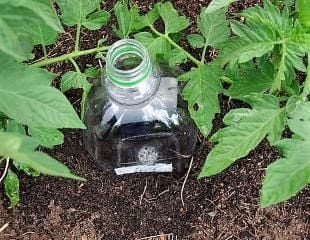
Recycle water
Reducing the use of a hose pipe saves money and water. Plants do not need water cleaned to the standard of our tap drinking water. Household water, often called "grey" water, is ideal for plants. Water can be reused from washing vegetables and also from washing dishing, and shower water. Provided it only has soap or detergents in it, not bleach or disinfectants, it can be used to water the garden.

Water during the day
There are two good reasons why it is more efficient to water the garden in the morning.
First, plants have small pores called stomata through which they draw water and the stomata close at night and open in the water. When you water in the morning it enables the plant, through the open stomata, to draw in water and if the plant is hydrated, it will withstand a hot sunny day much better. The second reason is that water evaporates less in the cooler morning that later in the day when temperature rise, providing more for the plant.
Watering at night leaves the water in the soil, because the plant's stomata are closed, so the plants cannot take up water and it also creates a more comfortable environment for slugs.
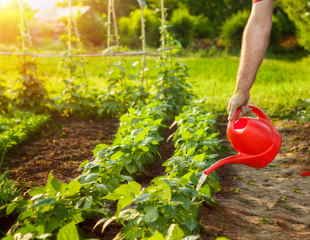
Don't water the leaves
It is best to direct the water down to ground level when watering. It is more efficient and many plants dislike their leaves splashed with water.
There are several plant diseases such as Rust, Botrytis, which are spread by fungal pathogens which are encouraged by overhead watering. Strawberries react badly to heavy downpours, which splash the leaves and fruit. Obviously we cannot control the weather, but watering close to the ground will help.
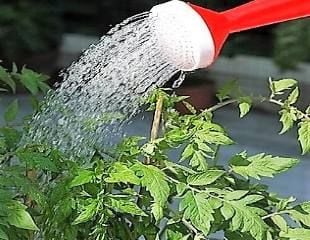
Rainwater free and everywhere.
We may be talking about drought, but this is often interspersed with bouts of rain, sometimes prolonged. Two water butts will provide enough water for most gardens to keep the drought at bay.
It is probably best to drain the water butts in winter, as in extreme weather the water can freeze and cause the container to split.
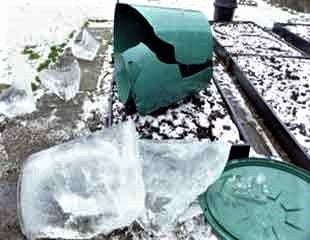
The Power of Mulch and Gravel gardens
Mulching has many benefits, one of which is to help retain water in the soil. Commonly used mulches are bark, leaf mould, proprietary mulches such as Strulch, and some gardeners like to use decorative mulch such as coloured stones and gravel. Mulching a border will also help to suppress weeds, deter unwanted visitors such as slugs, and retain water.
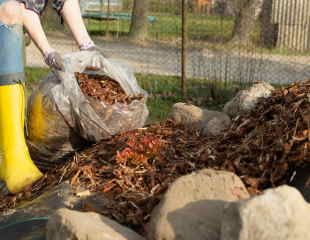

If you are in an area which is becoming drier and drought is more of an issue, creating a gravel garden is well worth considering. Beth Chatto pioneered gravel gardens and her famous garden is renowned for never having been watered.
Her garden is in Essex, one of the driest areas in the country, but a gravel garden will work anywhere in the country where you have a dry sunny area.
The option to plant a gravel garden, planted with drought-tolerant plants does reduce the need for watering.
Let it Grow
Lawns take a lot of mowing and watering in dry spells. Fortunately, gardening trends are moving away from the perfect green striped lawn. Leaving the lawn longer will help keep moisture in the lawn, and encourage the lawn grasses to form longer roots, which in turn will help it withstand the periods of drought better. The longer grass will shade the ground more so it does not dry out so much.
Leaving parts of all the lawn longer is also excellent for wildlife and a good addition to a wildlife garden.
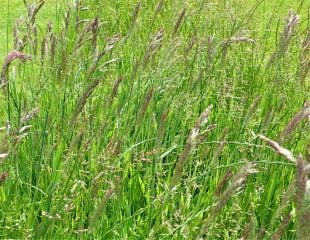
Hanging Baskets and Containers
Hanging Baskets and Containers are very prone to drying out and on hot summer days this necessitate daily watering.
You can buy hanging baskets which have a water reservoir in the base. This does not obviate the need to water, but it reduces it and helps to keep the soil hydrated.
In both containers and hanging baskets, water retaining gel can be mixed into the compost to reduce water loss.
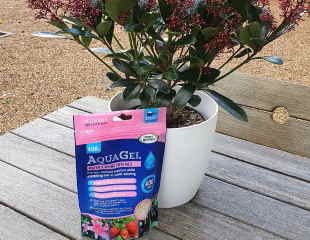
New Plants need Water
All plants need water when first planted to get established. This is particularly so of shrubs where one of the most common cause of failure of new shrubs is lack of water.
Whilst everyone thinks of spring as planting time, for large plants, especially shrubs, it is much better to plant in the Autumn when there is much more rainfall compared to springtime.
Whenever you are planting, use the earth around the plant to form an indentation, or well, which will help to capture water, (and rainwater) and cause less run off. It will puddle, but not excessively so just enough to make good use of the water.
